Industrial water treatment is a critical technique for purifying and cleaning water for industrial use. Water used in industrial operations can come from various sources, including rivers, lakes, and wells, and it may contain impurities such as dissolved salts, minerals, microbes, and other contaminants.
These contaminants can disrupt industrial operations and harm equipment and infrastructure. The goal of industrial water treatment is to eliminate these pollutants from the water and make it appropriate for use in industrial processes.
This article will cover the goals of industrial water treatment, standard industrial water treatment equipment and procedures, its numerous applications, and how to select the appropriate type of industrial water treatment equipment.
This article will also look at the many steps of the treatment process and how they contribute to removing contaminants from the water. After reading this article, customers will better know the significance of industrial water treatment and how it might assist their industrial operations.
What Is Industrial Water Treatment?
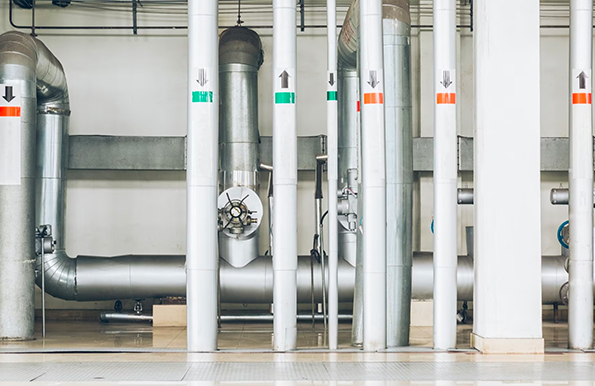
Industrial water treatment is a process that is used to purify and clean water for industrial use. The water used in industrial processes can come from various sources such as rivers, lakes, or wells. It may contain impurities such as dissolved salts, minerals, microorganisms, and other contaminants. These impurities can negatively impact industrial processes and cause damage to equipment and infrastructure.
Industrial water treatment aims to remove these impurities and make the water suitable for use in industrial processes. The process typically includes several stages: pre-treatment, primary, secondary, and advanced treatment.
Pre-treatment is the first stage of the process, which typically involves removing large debris, such as leaves and twigs, and coarse particles, such as sand and gravel, from the water.
Primary treatment is the second stage of the process, which involves removing dissolved solids, such as salts and minerals, and suspended solids, such as clay and silt, from the water. Techniques such as sedimentation and filtration are commonly used during this stage.
Secondary treatment is the third stage of the process, which involves removing dissolved and suspended organic matter, such as microorganisms, from the water. Techniques such as biological, chemical, and physical treatment are commonly used during this stage.
Advanced treatment is the final stage of the process, which involves removing specific contaminants from the water, such as heavy metals, radioactive materials, and dissolved gasses. Techniques such as ion exchange, reverse osmosis, and membrane filtration are commonly used during this stage. During the industrial water treatment process, industrial ball valves play a crucial role in controlling the flow of water and ensuring the effectiveness of the treatment process.
Objectives of Industrial Water Treatment
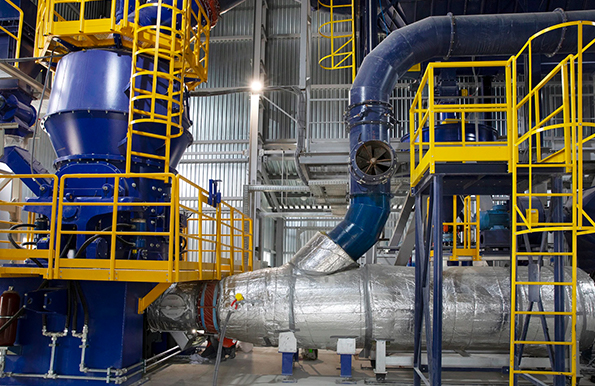
Industrial water treatment’s primary goals are to purify and clean water for industrial usage and preserve industrial equipment and infrastructure. The following are the specific goals of industrial water treatment:
Getting Rid of Contaminants
The fundamental goal of industrial water treatment is to eliminate impurities from water, such as dissolved salts, minerals, bacteria, and other toxins. This is done to prepare the water for industrial use and protect equipment and infrastructure.
Meeting Regulatory Requirements
Industrial water treatment is also utilized to comply with regulations. Many enterprises must adhere to strict norms and regulations regulating the purity of the water used in their operations. An industrial butterfly valve, among other equipment, can be used as part of the water treatment process to help meet these standards.
Increasing Efficiency
Impurities in water can harm industrial processes, making them less efficient. Industrial water treatment removes these pollutants, increasing efficiency and decreasing downtime.
Promoting Long-Term Viability
Industrial water treatment can also help to achieve sustainability by minimizing water waste and conserving the environment.
Cost-Cutting Measures
Industrial water treatment can also save money by minimizing equipment and infrastructure damage and decreasing the need for expensive repairs and replacements.
Overall, industrial water treatment is an important step in ensuring that the water used in industrial operations is safe and fit for use, and it aids in the protection of industrial equipment and infrastructure, as well as meeting regulatory compliance. It can also boost efficiency, encourage sustainability, and cut expenses.
Common Industrial Water Treatment Equipment
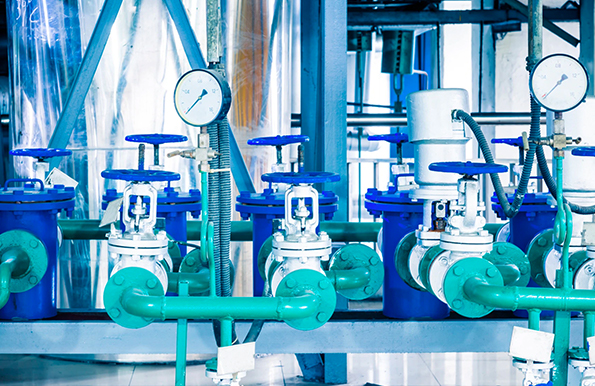
The following list includes the most common types of water treatment equipment.
1. Industrial Valves
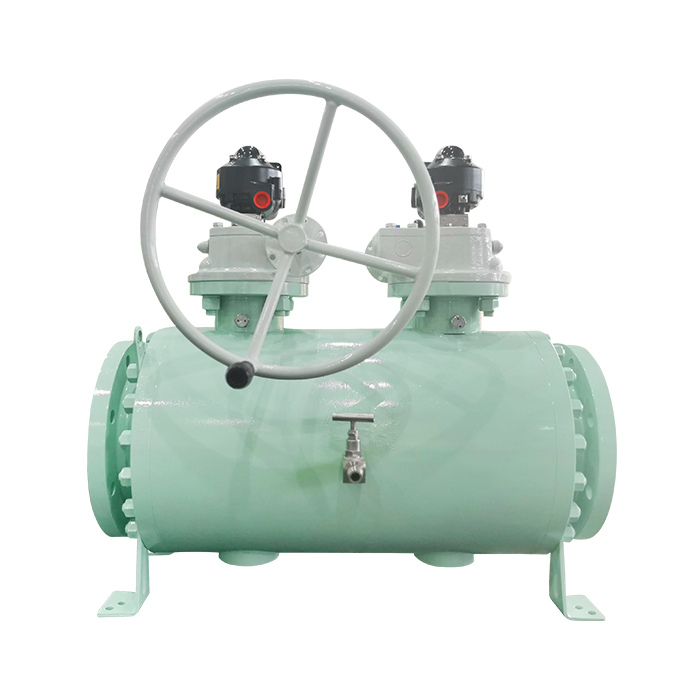
Industrial valves are a common component of industrial water treatment equipment and it plays a vital role in the operation of an industrial water treatment system. They are used to control the flow of water through the system, regulate pressure, and direct water to different stages of treatment.
The type of valve used will depend on the specific requirements of the water treatment process, such as flow rate, pressure, and temperature.
For example, gate valves are used to regulate the flow of water into and out of the treatment system, while globe valves are used to control the pressure and flow rate of water within the system. Ball valves are often used for quick shutoff and isolation, while butterfly valves are used for throttling flow. Check valves are used to prevent backflow, ensuring that water only flows in the intended direction.
By properly regulating the flow of water in the treatment system, industrial valves help to ensure that the water is effectively and efficiently treated, meeting the required quality standards before it is returned to the environment or re-used.
2. Vacuum Filters
Continuous-operation vacuum filtration systems can eliminate significant downtime. These systems require little maintenance and reduce enormous amounts of sludge while lowering production costs.
Disposable media vacuum filters draw dirty coolant through disposable filter media using a vacuum chamber. The media forms a filter cake by applying the tried-and-true technique of optimal filtration by accumulating pollutants or sludge.
Semipermanent vacuum filters can further reduce operational costs by eliminating the need for disposable media. Back-flushing with clean coolant keeps the filter clean without using substantial air.
The solids that have been back-flushed descend from the filter element and settle in a tank, where they are removed via a chain drag-out/flight system. These devices are self-contained and need little floor space, making maintenance and operation easier.
3. Solid Bowl Centrifuges
In metal processing applications where particle removal is critical for recycling and reuse, these devices use centrifugal force (rather than consumable media) to separate solids from liquids. Process liquid is either pumped or gravity-fed into the centrifuge at the input.
After that, the process solids are centrifuged to separate them from the liquid phase, and they are afterward collected in a rotor that can be readily removed and is also known as a liner. The clarified liquid overflows the rotor into the outer casing.
It is gravity-fed back into the process, lowering the cost of transferring waste coolants and water away from the plant. Solid bowl centrifuges are available in manually cleaned rotors (with a reused liner) and fully automatic self-cleaning versions.
They can perform high-performance liquid/solid separation for all particle types, including metallic and nonmetallic, ferrous and nonferrous particles. In addition, these centrifuges can clean themselves thoroughly.
4. Sand Filters
Sand filters are used in industrial water treatment to remove physical particles as tiny as 20 microns. These types of industrial water equipment are designed with several parallel beds to minimize pressure drop.
These beds are frequently made up of different media layers. Backwashing the sand removes any silt, allowing the machine to be returned to operation in perfect condition.
5. Controls and Monitoring Equipment
The design of industrial water equipment and filtration systems must include remote monitoring and control devices. Flow meters are strategically placed throughout the system to detect variations from the standard flow rate and maintain the system’s best operation.
Several factors are measured, including hardness, conductivity, turbidity, dissolved oxygen, temperature, and salinity. The flowing water’s earlier and subsequent conditions are monitored and documented.
6. Reverse Osmosis Systems
RO technology eliminates dissolved solids and pollutants from water by using a semipermeable membrane that allows water to pass through while leaving the bulk of dissolved solids or salts and other contaminants behind. In order to produce the desired effect, RO membranes need to be subjected to a pressure higher than the osmotic pressure of the water.
High-pressure water is also required. The permeate is the water that passes through the RO membrane, while the concentrate is the dissolved salts that are rejected by the membrane. A well-constructed and maintained RO system can remove up to 99.5% of incoming dissolved salts, pollutants, and virtually all colloidal and suspended debris.
From even the most difficult waste and feedwater applications. Following UF or chemical waste and feedwater treatment, RO technology is often used as the next step in industrial, metalworking, and surface treatment applications.
7. Vacuum Evaporation and Distillation
Evaporation is a natural process widely recognized as the most effective way for various wastewater treatment processes. It differs from traditional separation processes in that it separates the water from the impurities rather than filtering the contaminants out of the water.
The only technology that is capable of reaching such high rates of water recovery and concentration is the vacuum evaporator. Which speeds up the process of natural evaporation and treats and distills anywhere from one to one hundred and twenty tons of industrial wastewater per day.
They can achieve residual total solids concentrations of more than 85%. The three main vacuum evaporators are as follows:
- Heat Pumps:High adaptability and versatility, as well as low energy usage and dependability
- Condensation of Mechanical Vapor:Designed to treat large amounts of wastewater at low boiling temperatures to save energy.
- Warm Water and Cold Water: Using existing excess hot water/steam and cooling water to cut operational costs
8. Sewage Treatment Systems
Sewage treatment systems treat and purify wastewater created by residences and buildings before it is discharged into the environment. The purpose of wastewater treatment is to remove pollutants and pathogens from wastewater so that it can be discharged safely into rivers, lakes, or oceans.
There are various types of sewage treatment systems, each with its unique set of technologies and processes. The activated sludge technique, which uses microorganisms to break down organic matter and remove contaminants from wastewater, is the most prevalent.
This procedure is divided into primary therapy, secondary treatment, and tertiary treatment. Primary treatment involves eliminating large solid objects from wastewater, such as sticks, leaves, and other debris.
This is usually accomplished through the use of screens or a grit chamber. Microorganisms are used in secondary treatment to break down the leftover organic waste and eliminate contaminants such as nitrogen and phosphorus.
Tertiary treatment is a sophisticated technique that removes any leftover pollutants, such as heavy metals, minerals, and microorganisms. Following sewage treatment, the water is frequently disinfected with chlorine, UV light, or ozone to destroy any lingering microorganisms before disposal.
9. Ultrafiltration Systems
Ultrafiltration is a pressure-driven process that uses a membrane to remove large molecular weight contaminants such as emulsified oils, suspended particles, emulsions, metal hydroxides, dispersed material, and other contaminants from wastewater, coolant, and other solutions.
UF is extremely successful at clarifying solutions containing suspended particles, bacteria, and large macromolecules, such as oil and water. UF systems are designed to reduce the volume of oily water by up to 98 percent without using chemicals.
These systems may also remove small particles during deburring and tumbling, allowing the water and soap solution to be recycled and reused. Businesses may see a 75% decrease in the wash water and detergent pricing and a 90% reduction in waste disposal costs when calculating heating and disposal costs.
For these reasons, UF membrane technology is rapidly replacing traditional filtration technologies as the preferred option.
10. Tramp Oil Separators
The polluted fluid is passed through a series of baffles and a bed of porous media in this wastewater treatment process, which separates free and mechanically dispersed oils from the fluid. The cleansed fluid flows back into the reservoir through the effluent discharge weir.
Oils, inverted emulsions, and other waste products are expelled automatically from the separator’s top into an appropriate container. These separators, which use gravity flow and coalescence, may reduce tramp oil levels to less than 1% in a single pass without using consumables.
Waste oil separators can also:
- Which can save up to 75% on the cost of procuring fresh fluid, which includes soluble oils, synthetic and semi-synthetic coolants, and wash waters.
- Reduce the expense of laundry detergents, heating, and disposal.
- Hazardous waste volume is reduced by 90%.
- System payback or ROI can be realized in less than six months.
11. Industrial Effluent Treatment System
A procedure used to clean wastewater created by industrial processes before it is released into the environment is known as an industrial effluent treatment system. Industrial wastewater treatment aims to eliminate pollutants and lessen the effluent’s environmental impact.
There are various industrial wastewater treatment systems, each of which is designed to remove a specific type of pollutant. Physical, chemical, and biological treatment methods are standard industrial effluent treatment systems.
Physical treatment methods remove contaminants from wastewater using physical processes such as sedimentation, filtration, and flotation. Chemical treatment involves using chemicals to neutralize or eliminate pollutants from wastewater.
Microorganisms are used in biological treatment processes to break down contaminants in the effluent. The specific treatment methods employed in an industrial wastewater treatment system will be determined by the type of effluent treated and the pollutants present.
A chemical manufacturing company, for example, may employ chemical treatment methods to remove heavy metals and other hazardous pollutants from its effluent. In contrast, a food processing plant may use biological treatment methods to remove organic matter and nutrients.
Common Industrial Water Treatment Methods
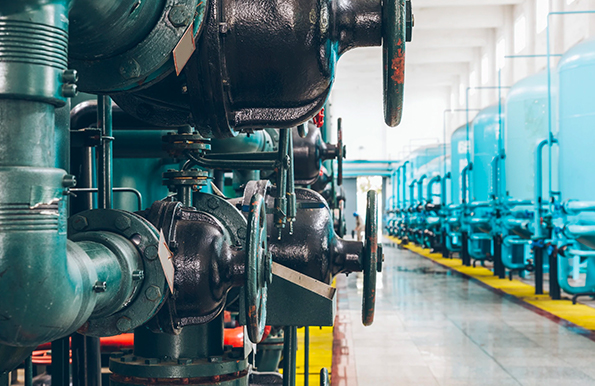
A variety of processes are involved in industrial water treatment management. It is essential to be knowledgeable about the options, even though not all types of water chemistry necessitate every procedure. The goal is to reduce risk at every stage of any industrial operation that involves water. The following are examples of common industrial water treatment techniques:
- Filtration
- Dealkalization
- Softening
- Nanofiltration Ion exchange
- Reverse osmosis
Filtration removes silt, organic debris, and turbidity from water. The softening procedure removes the hardness of the water.
Dealkalization decreases alkalinity from this point on to prevent scale formation further downstream. Even though it may be appropriate for certain applications, this method is commonly viewed as an antiquated alternative due to its high operational costs and lack of universal effectiveness.
Nanofiltration and reverse osmosis are two water treatment processes that could provide the required level of purification for industrial water. Nanofiltration removes germs and hardness, whereas reverse osmosis takes a step further by rejecting a significant proportion of total dissolved solids.
Ion exchange is a substance process in which some (unwanted) ions are swapped for others, resulting in a water chemistry that is more appropriate to the needs of the user. This process, as well as the rest of the techniques, rely on the use of specialized industrial valves, engineers need to get them from a trusted industrial valve manufacturer.
What Applications Need Industrial Water Treatment
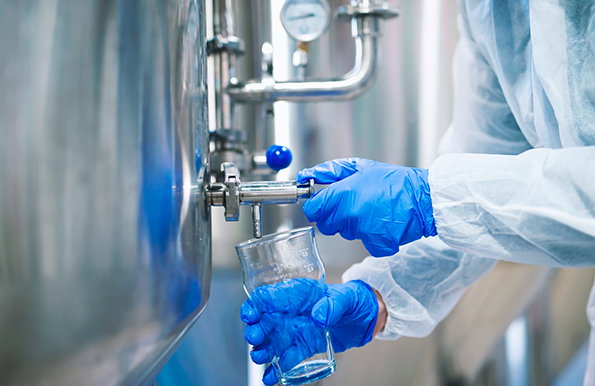
Mining
Mining operations are frequently complex endeavours located in or near diverse and vulnerable environments. These procedures generate wastewater discharges and air pollutants in addition to tailings and waste rock requiring disposal.
There are various mining uses that necessitate industrial water treatment. Process water treatment is one of the most common applications. This water is utilized in several mining processes, including grinding, flotation, and cyanide leaching.
It may have a high concentration of dissolved minerals, heavy metals, and other impurities that must be removed before the water may be reused or disposed of safely. Industrial water treatment technologies such as ion exchange, reverse osmosis, and precipitation might be used to eliminate these contaminants.
Mine water treatment is another application of industrial water treatment in mining. This water is derived from underground mines and may contain significant concentrations of dissolved minerals, heavy metals, and other pollutants.
Industrial water treatment procedures such as ion exchange, reverse osmosis, and precipitation can be used to eliminate these contaminants and make the water safe for reuse or discharge.
Mining also relies on industrial water treatment to treat wastewater created by mining operations. This effluent may contain significant quantities of dissolved minerals, heavy metals, and other contaminants that must be cleaned before it can be discharged safely.
Industrial water treatment technologies such as ion exchange, reverse osmosis, and precipitation might be used to eliminate these contaminants. Finally, mining necessitates using cooling water for equipment and facilities, which must be treated to avoid scaling and corrosion.
Oil and Gas
The process of eliminating contaminants from crude oil and natural gas to make them appropriate for transport and use is referred to as oil and gas treatment. Typically, this process entails separating the oil and gas into various components such as water, natural gas liquids, and sulphur.
The separated components are then processed further to eliminate any residual contaminants. The treatment of wastewater from shale gas extraction, also known as generated water, is a primary environmental concern.
The extracted water is a mixture of water, chemicals, and naturally existing pollutants. To avoid contamination of local water sources, the water must be appropriately treated and disposed.
Physical, chemical, and biological treatment techniques are popular for generating water. Sedimentation and filtering are examples of physical treatment procedures, whereas chemical treatment methods involve using chemicals to eliminate contaminants. Microorganisms are used in biological treatment processes to break down pollutants.
Following treatment, the water can be disposed of in various ways. One approach is injecting it back into the ground, a process called underground injection. Another option is to release the water into a surface water source, like a river or lake. However, this is strictly controlled and may be prohibited in some locations. The treated water can sometimes be utilized for industrial or irrigation uses.
Health Care
Water treatment systems in health care facilities provide pure, high-quality water for potable, non-potable, and other medicinal applications. It makes a significant contribution to improving patient care. It speeds up medical processes, including washing and disinfecting medical equipment and supplies.
Always supplying clean and pure drinking water contributes to the safety of workers, patients, and visitors. It also lowers operational costs and energy consumption while providing uninterrupted service, allowing health facilities to operate optimally.
Products for Skin Care, Cosmetics, and Baby Care
This is another industry that necessitates an industrial water treatment system that produces clean, impurity-free water. This industry has the most stringent disinfection and purification criteria. As a result, to achieve these requirements, customers must invest in a high-quality water filtration system.
Water is used to produce a wide range of products, and when it comes to manufacturing, filtered water can help maintain product quality, hence extending shelf life. The type of product consumers make will determine which industrial water treatment system is best for them.
Furthermore, most water treatment systems used in this business help with water disinfection, which helps limit environmental contamination.
In all of these industries, an industrial strainer can be used as a pre-treatment step before the actual water treatment process. An industrial strainer can remove larger particles such as debris, sand, and other contaminants from the water, making the water treatment process more efficient and effective.
Construction
Homebuyers increasingly evaluate the extra amenities provided by the construction industry before making a purchasing decision. A water filter is a requirement, as water quality varies by location. A centralized drinking water system could be one of the residential development’s distinguishing features.
In addition to preventing environmental pollution, wastewater treatment is critical for long-term growth. Because clean water can be reused for gardening and flushing, it is a cost-effective option for both customers and developers.
Paint
Every day, the paint industry handles enormous amounts of water. Purified water is required for the creation of water-based paints. Cleaning packing materials and combining pigments and colours in tanks require it. It is also necessary to chill the ball mills used in oil-based paints.
Using a UV disinfection Industrial water treatment system with a wastewater treatment plant allows to treat a large portion of the wastewater, decreasing pollutants. Furthermore, recycled water can be used to clean mills and containers in preparation for manufacturing the next batch of paint.
Choosing the Right Type of Industrial Water Treatment Equipment
The type of industrial water treatment is determined by the unique needs and features of the water to be treated. Physical filtration, chemical treatment, and biological treatment are all typical procedures.
Physical filtration removes solid particles from water using a physical barrier, such as a filter. Sedimentation, flotation, and centrifugation are examples of such processes.
The chemical treatment removes contaminants from water by using chemicals. Coagulation, flocculation, and chlorination are examples of such processes.
Living organisms, such as bacteria, are used in biological treatment to break down organic materials in water. Methods such as activated sludge and biofiltration can fall within this category.
It is crucial to note that a mix of these approaches is frequently employed to purify water. Furthermore, the best system relies on the source and quality of the water being treated, as well as the specific industrial use. Consultation with a water treatment professional can assist in determining the optimum technique.
Conclusion
Industrial water treatment is critical for guaranteeing a safe and clean industrial water supply. Industrial facilities may successfully cleanse their water and fulfill industry standards by understanding the numerous treatment processes, such as physical filtering and chemical and biological treatment.
It’s critical to deal with a reputed and knowledgeable manufacturer when choosing the correct equipment for the industrial water treatment needs. Dombor is an industrial valve company that stands out in this industry because of its cutting-edge technologies and advanced industrial valves and strainers.
They specialize in producing a wide range of industrial valves that can withstand harsh working conditions and are ideal for industrial applications. Dombor professional engineers are continually raising the bar in custom valve manufacture and looking for solutions to industry challenges.
They provide a wide selection of products, including conventional and specialized valves, each meeting unique industry specifications. A technical quality control staff inspects each valve during and after production to ensure consistent functioning.
The reliable valve supplier also has thorough quality control, conforming to established global standards. They also offer one-stop service, from valve customization and significant order processing to quick delivery and experienced after-sales support, making them a trustworthy partner for industrial water treatment needs.









